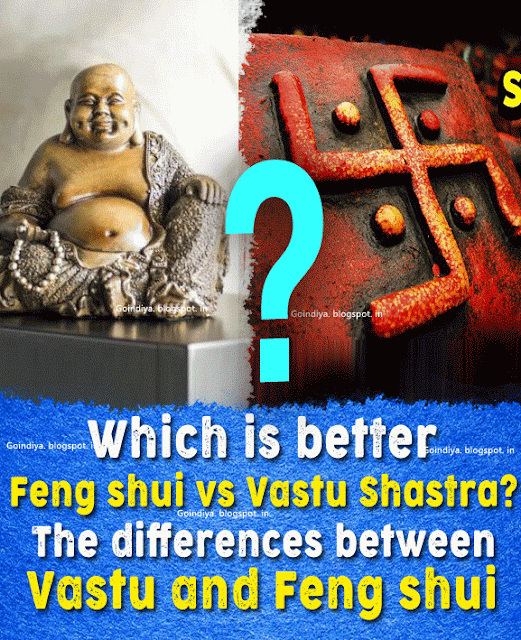Vastu and Feng Shui are two different methods used
for organising spaces for positive energies. The roots and history of Vastu and
Feng Shui are completely different. The origin of Vastu dates back to 6000-3000
BC when it was practised in ancient India. Feng Shui came into existence around
25 AD in China.
GOOGLE AD
Difference
between Vastu Shastra and Feng Shui
Following lines show some of the major aspects that
differentiate Vastu and Feng Shui. The word “Vastu” means living. According to Vastu, the most important thing
is the Earth that is a living organism.
The word “Feng Shui” means water and wind. According to Feng Shui,
everything is based on the five elements and its positive energies. These
energies help people who practise to live in perfect harmony with the
environment.
1. Both Vastu and Feng Shui
differ in the five major elements they represent. In Vastu, the five elements
include earth, fire, light, wind and ether.
Meanwhile, in Feng Shui, the five elements include
earth, fire, metal, water and wood. Feng Shui is practised for living in
perfect balanced harmony. The five major elements used in Vastu and Feng Shui
differ. Moreover, the purposes of using them are not the same either.
GOOGLE AD
2. Vastu manages the
magnetic fields of the Earth comprising of the north and south poles. In
addition, Vastu considers the rays of the sun as basic elements. The common feature of Vastu and Feng Shui is
that both manage the notions of energy. However, Vastu and Feng Shui offer
different methods and guidelines for living with positive energies.
3. Vastu, based on three
main principles, clearly differentiates Vastu from Feng Shui. According to
Vastu’s first principle, all premises should be designed for good use and easy
application. These premises include buildings, houses and other such spaces.
According to Vastu’s second principle, the premises should be aesthetically
correct. According to Vastu’s third principle, the premises should make all the
users feel comfortable in it.
GOOGLE AD
4. Vastu and Feng Shui have
lots of differences in mapping of the house or space. These include how the
house should be oriented and how the objects should be placed within it.
According to Vastu, there are general guidelines for following and using in
every house or space. In Vastu, the same position for all different rooms and
objects within it are used.
Meanwhile in Feng Shui, how to arrange things in the
house depends on elements and objects. These can be distributed based on where
the rooms are. Moreover, the rooms do not have to be designed in the same
identical way.
GOOGLE AD

